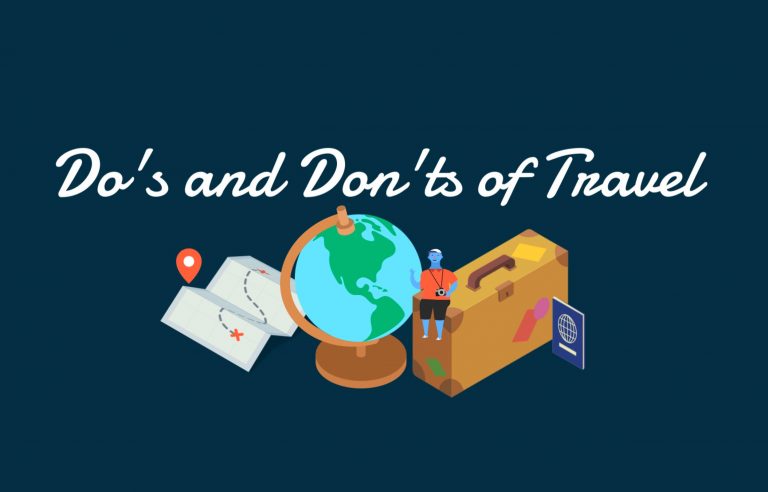Zombie Bunny is Reader-supported and may earn an affiliate commission through links on our site.

Maximize Your Profits: Amazon Money Making Guide
Discover how to maximize your profits on Amazon with this comprehensive guide. From understanding the marketplace to leveraging Fulfillment by Amazon, advertising strategies, and customer service, this guide equips you with the knowledge and tools to write your own success story.
Maximizing your profits on Amazon may seem challenging, but with the right strategies, it’s certainly achievable. This comprehensive guide walks you through every step of the journey, from understanding the Amazon marketplace and its tools to selecting profitable niches, sourcing products, optimizing listings, managing customer reviews, and much more. Learn how to leverage Amazon’s Fulfillment by Amazon (FBA) service, utilize effective advertising strategies, and provide excellent customer service to enhance customer satisfaction and loyalty. Whether you’re an aspiring entrepreneur or an established seller, this guide equips you with the knowledge and tools to write your own success story on Amazon.
Introduction: The Amazon Goldmine

© Copyright , ZombieBunny.Org
Introduction to the Amazon marketplace
The Amazon marketplace is a global ecommerce giant, home to millions of businesses, big and small, each seeking to tap into its vast pool of shoppers. As a seller, understanding the intricacies of the Amazon marketplace is the first step towards maximizing your profits and achieving financial freedom.
Amazon isn’t just a platform for buying and selling; it’s an ecosystem that offers a wide range of tools and services designed to help sellers succeed. From Amazon’s Fulfillment by Amazon (FBA) service, which takes care of storage, packaging, and shipping, to its suite of advertising and marketing tools, the marketplace is geared towards aiding sellers in reaching their potential customers effectively.
Furthermore, Amazon’s global reach allows sellers to access customers from different parts of the world, breaking geographical barriers that may limit traditional brick-and-mortar stores. With its detailed product categories, anyone can find a niche suitable for their business, making it an ideal platform for diverse sellers.
However, embarking on this journey requires a keen understanding of the platform’s rules, policies, and algorithms that govern visibility and sales. It’s also essential to stay updated with the latest trends and changes within the marketplace to stay competitive.
In the coming sections, we will delve deeper into the various aspects of selling on Amazon, providing you with a comprehensive guide to help you navigate this promising yet complex terrain. Remember, success on Amazon doesn’t happen overnight, but with the right approach and strategies, the Amazon marketplace can indeed become your goldmine.
Potential of Amazon for business
The potential of Amazon for businesses is vast and multi-faceted. With over 300 million active customer accounts and 197 million monthly unique visitors, Amazon offers an unprecedented scale of opportunity for sellers worldwide. Harnessing this potential can lead to significant growth and profitability for your business.
The beauty of Amazon lies in its diverse customer base, which spans across different demographics, interests, and geographic locations. This diversity allows businesses of all types and sizes to find their target audience on the platform. Whether you’re selling handmade jewelry, tech gadgets, or organic food products, there’s a customer segment for you on Amazon.
The marketplace also provides various business models for sellers. You can choose to sell products directly to consumers, engage in wholesale, or even dropship products. Additionally, Amazon’s Fulfillment by Amazon (FBA) program allows you to leverage Amazon’s logistics network, freeing you from the hassles of storage, packaging, and shipping.
Moreover, Amazon’s robust advertising and analytics tools can give your business a competitive edge. By using these tools, you can gain valuable insights into customer behavior, market trends, and product performance, helping you make informed business decisions and optimize your sales strategies.
Beyond these, Amazon’s commitment to innovation and customer-centric approach continually open new avenues for businesses to engage with customers and improve their shopping experience. As the platform evolves, so do the opportunities for businesses to grow and maximize their profits. Therefore, understanding and leveraging the potential of Amazon for business is fundamental to your success as a seller.
Success stories of Amazon sellers
Success stories of Amazon sellers are plentiful and inspiring, showcasing the platform’s potential to transform small businesses into profitable ventures. From individuals starting with a single product to companies expanding their market reach, the stories are as diverse as they are motivational.
Take the example of a small business owner who started selling handmade soaps from her kitchen on Amazon. Through effective product listing optimization and customer-centric service, she was able to grow her business exponentially, eventually selling thousands of units per month.
Another inspiring story is of a young entrepreneur who began selling niche tech accessories on Amazon while still in college. Leveraging Amazon’s Fulfillment by Amazon (FBA) service, he was able to focus on product development and marketing, leaving logistics to Amazon. Today, his business has expanded to multiple countries and continues to grow.
It’s not just about small businesses; even established brands have found success on Amazon. Many have used the platform to reach new customer segments and geographic markets, boosting their sales significantly.
These success stories underscore the power of the Amazon marketplace in driving business growth and profitability. They demonstrate that with the right product, business model, and strategies, sellers can tap into Amazon’s vast customer base and thrive.
In this guide, we aim to equip you with the knowledge and tools to write your own success story on Amazon. Whether you’re a budding entrepreneur or an established business looking to expand, the opportunities on Amazon are immense, waiting to be seized.
Choosing Your Niche: The Key to Success

© Copyright , ZombieBunny.Org
The importance of choosing a niche
Choosing a niche is a critical decision in your Amazon selling journey. The right niche can set you on a path to success, while the wrong one can lead to dwindling sales and stalled growth. A well-selected niche allows you to focus your resources on a specific market segment, making your marketing efforts more effective and your product range more appealing to your target customers.
The importance of choosing a niche lies in the nature of the online marketplace. With millions of products available on Amazon, customers are spoiled for choice. A niche product stands out in this vast sea, catering to a specific customer need or interest that may be underserved by mainstream offerings. This uniqueness can be your competitive advantage, helping you attract and retain customers.
Selecting a niche also helps you streamline your product sourcing and inventory management. Instead of dealing with a wide range of products, you can focus on a selected few, making your operations more efficient and manageable.
A niche focus also aids in building brand identity and expertise. By specializing in a specific product category, you can position yourself as a trusted supplier in that area, fostering customer loyalty and repeat business.
Ultimately, the importance of choosing a niche on Amazon lies in its potential to drive business growth and profitability. It’s about finding that sweet spot where customer demand, market trends, and your business capabilities intersect. This intersection is where your Amazon success story begins.
How to find profitable niches
Finding profitable niches on Amazon involves a mix of data-driven analysis and creative thinking. The process starts with identifying potential niches that align with your interests and business capabilities. Think about what products you are passionate about, have knowledge of, or have access to. These could be potential niches for your Amazon business.
Once you have a list of potential niches, the next step is to analyze their profitability. This involves researching the demand and competition for each niche. Amazon’s Best Sellers Rank (BSR) is a good place to start. High-ranking products in a specific category indicate strong demand. However, if the top products are dominated by big brands or have thousands of reviews, competition might be stiff.
In addition to BSR, consider using Amazon research tools like Jungle Scout or Helium 10. These tools provide detailed data on product performance, competition level, and market trends, helping you make informed decisions.
Another important factor to consider is the price point. Higher-priced items often yield better profit margins, but they might also require a larger initial investment and could have a slower sales velocity.
Finally, look for niches with potential for add-on sales or repeat purchases. These can provide an ongoing revenue stream and help build customer loyalty.
Keep in mind, finding a profitable niche is just the first step. Success also depends on your ability to source quality products, optimize your listings, and effectively market your products. With the right strategies, a profitable niche can pave the way for your Amazon success.
Analyzing competition in your chosen niche
Analyzing competition in your chosen niche is crucial for your Amazon success. It helps you understand the marketplace dynamics, benchmark your products against competitors, and formulate effective strategies to stand out.
Start by identifying the top sellers in your niche. Look at their product range, pricing, product quality, customer reviews, and overall brand presence. This will give you an idea of what you’re up against and what you need to do to surpass them.
Next, analyze their product listings. How are their product titles and descriptions written? What keywords are they using? How are their product images? A thorough review of these elements can provide valuable insights into their SEO and marketing strategies, which you can learn from and incorporate into your own listings.
Customer reviews on competitor listings are also a goldmine of information. They can reveal what customers like and dislike about the products, giving you an opportunity to improve your product offering and address those pain points.
Also, consider using Amazon analytics tools like Jungle Scout or Helium 10. These can provide detailed data on competitor sales, ranking, and performance, helping you gauge the competition level in your niche.
Remember, the goal of competition analysis isn’t to replicate what others are doing, but to find ways to differentiate your offering and create a unique value proposition. It’s about understanding the competitive landscape and making strategic decisions that position your business for success on Amazon.
Setting Up Your Amazon Seller Account: A Step-by-step Guide

© Copyright , ZombieBunny.Org
How to register for an Amazon seller account
Registering for an Amazon seller account is your first step towards becoming an Amazon seller. Here is a step-by-step guide to help you navigate this process.
Begin by visiting Amazon’s official website and navigate to the ‘Sell on Amazon’ page. Click on ‘Start Selling’, which will take you to the registration page. Here, you’ll be asked to choose between an ‘Individual’ or ‘Professional’ seller account. The Individual plan is ideal for sellers planning to sell fewer than 40 items a month, while the Professional plan is suited for sellers with larger volumes.
Next, you’ll be required to fill in your legal name, business address, and contact information. It’s crucial to provide accurate and up-to-date information as Amazon uses this for communication and account verification purposes.
Following this, you’ll be asked to input your billing information. Amazon requires a valid credit card for all seller accounts. Make sure the card you provide is internationally chargeable and has sufficient credit limit.
Finally, you’ll need to provide your tax information. This involves filling out Amazon’s online tax interview, which determines your U.S. tax status and whether you’re subject to U.S. withholding tax.
Once all the information is filled in and submitted, Amazon will review your application. The review process may take up to 48 hours. After approval, you’re all set to start selling on Amazon!
Remember, setting up your Amazon seller account is just the first step. To be successful, you’ll need to understand and navigate the Amazon ecosystem effectively. This guide aims to help you do just that.
Understanding Amazon’s seller policies
Understanding Amazon’s seller policies is crucial for running a successful and compliant business on the platform. Amazon’s policies are designed to ensure a fair and trustworthy marketplace for both buyers and sellers. Violation of these policies can lead to penalties, including account suspension, so it’s essential to familiarize yourself with them.
One of the key policies to understand is the Prohibited Seller Activities and Actions. This policy outlines actions that are not allowed on Amazon, such as manipulating sales rank, misusing product reviews, or engaging in fraudulent activities.
Another important policy is the Product Detail Page Rules. This policy states that sellers must accurately describe their products and follow specific guidelines when creating product detail pages. Misrepresentation of products can lead to listing removal or account suspension.
Amazon’s Selling Policies and Seller Code of Conduct is also a must-read. It outlines the expectations Amazon has for sellers, including maintaining current account information, honoring your commitment to buy and sell, and conducting yourself professionally.
Amazon also has specific policies related to product categories, shipping, returns, and customer service. It’s important to review the relevant policies for your product category and adhere to them.
Remember, while Amazon’s policies might seem overwhelming at first, they are crucial for maintaining the integrity of the marketplace. By understanding and complying with these policies, you can build a trustworthy and reliable business on Amazon, leading to better customer satisfaction and, ultimately, higher profits.
Managing your Amazon seller account
Managing your Amazon seller account effectively is key to your success on the platform. It involves monitoring your sales performance, optimizing product listings, handling customer service, and keeping up with Amazon’s policy updates.
Your Amazon Seller Central dashboard is the hub for managing your account. It provides a wealth of information about your sales, orders, inventory, and performance metrics. Regularly reviewing this data can help you identify trends, spot issues, and make informed business decisions.
Product listing optimization is another crucial aspect of account management. This involves reviewing your product titles, descriptions, images, and keywords to ensure they are SEO-friendly and appealing to customers. Amazon provides detailed guidelines on how to optimize your listings, and following these can improve your product visibility and sales.
Customer service management is also vital. This includes responding to customer inquiries promptly and professionally, handling returns and refunds, and managing customer reviews. Providing excellent customer service can boost your seller rating, which can in turn improve your visibility on the platform and increase sales.
Lastly, it’s important to regularly check for any updates to Amazon’s policies and ensure your business remains compliant. Amazon often sends updates via Seller Central, so make sure you check your notifications regularly.
Remember, effectively managing your Amazon seller account requires a commitment to continuous learning and improvement. With the right approach and tools, you can maximize your profits and grow your Amazon business.
Sourcing Products: Secrets of successful sellers

© Copyright , ZombieBunny.Org
Strategies for sourcing products
Sourcing products effectively is a cornerstone of a successful Amazon business. The right sourcing strategy can help you find high-quality products at competitive prices, boosting your profit margins and customer satisfaction.
One of the most common sourcing strategies is buying from wholesalers. This involves purchasing products in bulk at discounted prices and reselling them on Amazon. When sourcing from wholesalers, it’s crucial to factor in all costs, including shipping and Amazon fees, to ensure profitability.
Another popular sourcing strategy is private label. This involves manufacturing a product and selling it under your own brand. Private label allows you to control product quality and pricing, and build a unique brand identity. However, it also requires a larger initial investment and involves navigating manufacturing and branding processes.
Dropshipping is another strategy, where you sell a product without holding inventory. When a customer places an order, the product is shipped directly from the supplier to the customer. While dropshipping eliminates the need for inventory management, it also means you have less control over product quality and shipping times.
Lastly, retail arbitrage involves buying products from retail stores at a discount and reselling them on Amazon at a profit. While this strategy can yield quick profits, it’s also riskier due to potential issues with brand restrictions and price fluctuations.
Each sourcing strategy has its pros and cons, and the best one depends on your business model, resources, and risk appetite. The key is to research thoroughly, assess all costs, and continuously monitor and adjust your strategy based on market trends and performance data.
How to find and vet suppliers
Finding and vetting suppliers is a crucial step in your product sourcing strategy. The right supplier can provide you with quality products, competitive prices, and reliable delivery, setting the foundation for your Amazon success.
Start by identifying potential suppliers. Online marketplaces like Alibaba, Global Sources, and ThomasNet are good starting points. You can also find suppliers through trade shows, industry directories, and networking events.
Once you have a list of potential suppliers, begin the vetting process. This involves verifying their legitimacy, evaluating their product quality, and assessing their production capacity and delivery reliability.
First, verify the supplier’s legitimacy. Check their business license, certifications, and presence on industry platforms. Online reviews and customer testimonials can also provide valuable insights.
Next, request product samples to evaluate quality. This is crucial, as product quality directly impacts customer satisfaction and your Amazon seller rating. You may also want to visit the supplier’s production facility, if possible, to assess their manufacturing processes.
Assess their production capacity and delivery reliability by asking about their lead times, minimum order quantities, and their ability to meet deadlines. A supplier with consistent delivery times and flexible order quantities can be a valuable partner in managing your inventory effectively.
Lastly, consider the supplier’s communication and customer service. A supplier who responds promptly, provides clear information, and shows willingness to support your business can make the sourcing process smoother and more efficient.
Remember, finding and vetting suppliers requires time and diligence, but it’s a critical step in building a successful Amazon business. The right supplier can be a long-term partner in your Amazon journey, contributing significantly to your profitability and growth.
Negotiating deals with suppliers
Negotiating deals with suppliers is an essential skill for Amazon sellers. Effective negotiation can lead to better prices, improved product quality, and more favorable terms, all of which can boost your profitability.
Start the negotiation process by doing your homework. Understand the market rates for your product and the supplier’s cost structure. This knowledge will give you a solid footing in the negotiation process and help you set realistic targets.
When negotiating prices, it’s important to strike a balance. While you want to get the best price possible, pushing too hard could compromise product quality or sour the supplier relationship. Aim for a deal that’s beneficial for both parties.
Also, consider negotiating other aspects of the deal, such as payment terms, delivery schedules, and minimum order quantities. For example, you might negotiate longer payment terms to improve your cash flow, or flexible order quantities to better manage your inventory.
Communication is key in negotiation. Be clear about your requirements, listen to the supplier’s concerns, and work together to find solutions. Building a good relationship with your supplier can open up opportunities for better deals and collaboration in the future.
Remember, negotiation is a skill that improves with practice. Don’t be discouraged if you don’t get the perfect deal right away. Keep learning, stay adaptable, and continuously strive for win-win outcomes. With the right approach, negotiating with suppliers can significantly contribute to your Amazon success.
Pricing Strategy: Maximize Your Profits

© Copyright , ZombieBunny.Org
How to price your products for maximum profits
Pricing your products for maximum profits on Amazon requires a strategic approach. The right price can boost your sales, improve your ranking, and maximize your profits, while the wrong price can deter customers and eat into your margins.
Begin by calculating your total costs, including the cost of goods, shipping, Amazon fees, taxes, and any other expenses. This will give you the baseline price below which you would be making a loss. Always ensure your selling price covers these costs and leaves room for a reasonable profit.
Next, research your competitors’ prices. If your prices are significantly higher, customers might choose their products over yours. However, pricing too low might lead to a price war and reduce your profit margins.
Consider the perceived value of your product. If your product offers unique features, superior quality, or a strong brand, you may be able to price higher than the competition.
Dynamic pricing is another strategy to consider. This involves adjusting your prices based on market demand, competition, and other factors. Amazon repricing tools can help automate this process, adjusting your prices in real-time to stay competitive and maximize profits.
Lastly, test different pricing strategies and monitor their impact on your sales and profits. This will help you find the optimal price point for your products.
Remember, pricing is a powerful tool in your Amazon strategy. With careful calculation, competitor research, and continuous testing, you can find the sweet spot that maximizes your profits.
Use of pricing tools and software
Pricing tools and software can be a game-changer for Amazon sellers. These tools automate the pricing process, helping you stay competitive, maximize sales, and enhance profitability.
One of the most popular pricing tools is an Amazon repricer. A repricer automatically adjusts your product prices in response to market changes, such as competitor prices, demand fluctuations, and sales velocity. Using a repricer can save you time, ensure your prices are always competitive, and help you win the Buy Box more often.
Another useful tool is a profit calculator. This tool helps you calculate your potential profits by factoring in product cost, shipping fees, Amazon fees, taxes, and other expenses. Using a profit calculator can help you make informed pricing decisions and ensure your prices are profitable.
Pricing analytics tools are also beneficial. These tools provide insights into pricing trends, competitor pricing strategies, and price elasticity, helping you fine-tune your pricing strategy.
When choosing a pricing tool or software, consider factors like ease of use, customization options, integration with Amazon, and customer support. Also, ensure the tool complies with Amazon’s pricing policies to avoid any violations.
Remember, while pricing tools and software can be highly beneficial, they are not a substitute for a well-thought-out pricing strategy. They should be used as part of your broader pricing approach, complementing your market research, cost analysis, and strategic decision-making. With the right tools and strategy, you can price your products for maximum profits on Amazon.
Creating discount strategies to boost sales
Creating discount strategies is a proven method to boost sales on Amazon. Well-planned discounts can stimulate customer interest, increase sales velocity, and improve your product ranking.
One popular discount strategy is the “deal of the day” promotion. By offering a significant discount on a product for a limited period, you can create a sense of urgency and encourage impulse buying. This strategy can be particularly effective during peak shopping times such as holidays and sales events.
Volume discounts, where customers get a discount for buying multiple units of a product, is another effective strategy. This approach can increase your average order value and help you move inventory faster.
Bundling is also a great way to offer discounts. By selling a group of related products together at a lower price than if purchased individually, you can provide value to customers and increase your sales.
It’s important to promote your discounts effectively to maximize their impact. Use compelling product titles, descriptions, and images to highlight the discount. Amazon’s advertising tools can also help increase the visibility of your discounted products.
Remember, while discount strategies can boost sales, they should be used judiciously to protect your profit margins. Also, ensure your discounts comply with Amazon’s pricing policies. With the right approach, discount strategies can be a powerful tool to maximize your sales and profits on Amazon.
Product Listing Optimization: Standout in the Crowd

© Copyright , ZombieBunny.Org
Creating visually appealing product photos
Creating visually appealing product photos is a vital part of product listing optimization on Amazon. High-quality, engaging images can capture customer attention, convey the value of your product, and significantly boost your conversion rates.
Start by ensuring your main product image meets Amazon’s requirements. It should be a high-resolution image of the product on a pure white background, taking up at least 85% of the frame. This image is the first one customers see, so it needs to clearly and accurately represent your product.
In addition to the main image, Amazon allows you to upload multiple secondary images. Use these to showcase different angles, features, and uses of the product. You can also include infographics or text overlays to highlight key benefits and specifications.
Lifestyle images, showing the product being used in real-life situations, can be particularly effective. They help customers visualize how the product fits into their life, making it more appealing.
For technical or complex products, consider using images that illustrate the product’s dimensions, components, or assembly process. This can help customers understand the product better and reduce potential confusion or returns.
Remember, quality matters. Poorly lit, blurry, or unprofessional images can deter customers. Hiring a professional product photographer can be a worthwhile investment, especially for high-value or design-oriented products.
Overall, visually appealing product photos are a powerful tool to attract customers, communicate product value, and boost your Amazon sales. With thoughtful planning and execution, you can create product images that make your listings stand out in the crowd.
Writing SEO optimized product titles and descriptions
Writing SEO optimized product titles and descriptions is a key element of product listing optimization on Amazon. Well-crafted titles and descriptions can improve your product visibility, attract the right customers, and increase your conversion rates.
Your product title is one of the most important factors in Amazon’s search algorithm. It should include key product attributes such as brand name, product type, material, size, and color. However, avoid keyword stuffing as it can make the title unreadable and negatively affect your ranking.
A good strategy is to include the most important keywords at the beginning of the title. This is because Amazon’s algorithm tends to give more weight to the earlier part of the title, and customers are more likely to read the first few words.
Product descriptions should also be optimized for SEO. Use relevant keywords naturally throughout the description. Highlight key features and benefits, and address common customer questions. Make the description easy to read by using short sentences, bullet points, and clear language.
Don’t forget to utilize the backend keywords in your Amazon listing. These are keywords that aren’t visible to customers but are used by Amazon’s search algorithm. Include relevant keywords that you haven’t used in your title or description.
Remember, the goal of SEO optimization is not just to rank higher but to attract the right customers and provide them with useful information. With a customer-centric approach and strategic use of keywords, you can create SEO optimized titles and descriptions that boost your Amazon performance.
Managing customer reviews and ratings
Managing customer reviews and ratings is a vital aspect of selling on Amazon. Reviews and ratings not only influence buying decisions but also impact your product ranking on Amazon. Therefore, it’s important to actively manage your reviews and strive for high ratings.
Encourage customers to leave reviews after their purchase. This can be done through follow-up emails or messages, asking for their feedback. However, be careful not to violate Amazon’s policies on reviews. For instance, you’re not allowed to offer incentives for reviews or ask for positive reviews only.
Respond promptly and professionally to negative reviews. Apologize for any issues the customer experienced, offer a solution, and reassure them that you’re taking steps to prevent the issue from happening again. This can turn a negative situation into a positive customer experience, and might even prompt the customer to update their review.
Monitor your reviews regularly to identify common complaints or issues. This can provide valuable insights into your product quality, shipping process, or customer service, helping you make necessary improvements.
Also, consider using a review management tool. These tools can help you track reviews, send automated follow-up messages, and provide analytics on your reviews and ratings.
Remember, customer reviews and ratings are a powerful form of social proof that can significantly influence your Amazon success. By actively managing your reviews and using them as a tool for continuous improvement, you can enhance customer satisfaction, boost your ratings, and increase your sales on Amazon.
Amazon FBA: Leverage Amazon’s Infrastructure

© Copyright , ZombieBunny.Org
Understanding Amazon FBA and its benefits
Amazon FBA (Fulfillment by Amazon) is a service provided by Amazon that allows sellers to leverage Amazon’s robust fulfillment network. By using FBA, you store your products in Amazon’s fulfillment centers, and they take care of storage, packaging, and shipping of products, as well as customer service and returns.
One of the main benefits of using FBA is the access to Amazon’s Prime customers. Products fulfilled by Amazon are automatically eligible for Amazon Prime, which can significantly boost your sales due to the large number of Prime subscribers looking for fast and free shipping.
Another benefit is the time and effort saved on logistics. Amazon handles the tedious tasks of warehousing, picking, packing, shipping, and customer service, allowing you to focus on sourcing products, optimizing listings, and growing your business.
FBA also provides a level of trust and assurance to customers. Since Amazon handles fulfillment and customer service, customers are more likely to buy an FBA product due to the confidence in Amazon’s reliable customer service and return policy.
Moreover, using FBA can improve your chances of winning the Buy Box. This is the box on the product detail page where customers can add items to their shopping cart. As an FBA seller, you have a better chance of winning the Buy Box as Amazon favors FBA listings.
In conclusion, Amazon FBA offers a host of benefits that can help you streamline your operations, reach more customers, and maximize your profits on Amazon.
Calculating costs related to Amazon FBA
While Amazon FBA offers many benefits, it’s important to understand and calculate the associated costs to ensure it’s a cost-effective option for your business.
The primary costs related to FBA include storage fees and fulfillment fees. Storage fees are charged based on the amount of space your inventory occupies in Amazon’s fulfillment centers. These fees are calculated per cubic foot and vary based on the time of year, with higher fees during the peak holiday season.
Fulfillment fees are charged per unit and cover the cost of picking, packing, and shipping your products, as well as handling customer service and returns. These fees vary based on the size and weight of the product.
In addition to these, there might be additional costs such as removal fees (if you want to remove your inventory from Amazon’s fulfillment centers), long-term storage fees (for inventory stored for more than 365 days), and fees for optional services like prep service or labeling service.
To help sellers calculate these costs, Amazon provides the FBA Revenue Calculator. This tool allows you to input your product details and selling price, and it estimates your FBA fees and potential profit.
Remember, while FBA might add to your costs, it can also save you time and resources on logistics, potentially leading to increased sales and profits. Therefore, it’s important to consider both the costs and benefits when deciding whether to use Amazon FBA.
How Amazon FBA can help scale your business
Amazon FBA (Fulfillment by Amazon) can be a powerful tool to scale your Amazon business. By leveraging Amazon’s extensive logistics network and customer service, you can focus on growing your business while Amazon handles the operational details.
One of the key ways FBA can help scale your business is by simplifying logistics. As your business grows, handling inventory management, order fulfillment, and customer service can become increasingly challenging. With FBA, these tasks are taken care of by Amazon, freeing up your time and resources to focus on sourcing new products, optimizing your listings, and expanding your market reach.
Further, FBA can help expand your customer base. Products fulfilled by Amazon are eligible for Amazon Prime, which has millions of subscribers looking for fast, free shipping. This can significantly boost your visibility and sales.
FBA also enables you to sell globally. Amazon has fulfillment centers around the world, making it easier for you to reach international customers. This can open up new markets and increase your sales volume.
Lastly, using FBA can improve your seller performance metrics, enhancing your chances of winning the Buy Box. This is the box on the product detail page where customers can add items to their shopping cart, and winning it can lead to a significant increase in sales.
Overall, Amazon FBA offers a scalable, efficient solution to handle your logistics and customer service, enabling you to focus on strategic growth initiatives and scale your Amazon business.
Marketing Your Products: Drive More Sales

© Copyright , ZombieBunny.Org
Advertising your products on Amazon
Advertising your products on Amazon is a key strategy to increase visibility, attract more customers, and drive more sales. Amazon offers several advertising solutions that can help you reach your target audience and boost your performance on the platform.
Amazon Sponsored Products is a popular advertising option. These are pay-per-click ads that promote individual product listings. Sponsored Products can help increase product visibility, especially for new products, and can appear in search results and product detail pages.
Another powerful advertising tool is Amazon Sponsored Brands. These ads promote your brand and up to three products. Sponsored Brands ads appear in prominent locations, such as above search results, and can help increase brand awareness and product discovery.
Amazon also offers Sponsored Display ads, which can reach customers both on and off Amazon. These ads use automatic targeting to reach customers who have shown interest in categories related to your product.
When creating your Amazon ads, it’s important to choose relevant keywords, set competitive bids, and create compelling ad copy. Monitor your ad performance regularly and adjust your strategy as needed to maximize your return on ad spend.
Remember, while Amazon advertising can boost your visibility and sales, it’s also important to optimize your product listings and provide excellent customer service. A well-rounded Amazon strategy that combines effective advertising with strong organic performance can help you maximize your profits on Amazon.
Utilizing social media for product promotion
Utilizing social media for product promotion is a powerful way to drive traffic to your Amazon listings, build brand awareness, and increase sales. With billions of users worldwide, social media platforms offer a vast audience and diverse ways to engage potential customers.
Platforms like Facebook, Instagram, and Pinterest are particularly effective for product promotion due to their visual nature. High-quality product photos, engaging videos, and creative graphics can attract attention and stimulate interest in your products.
Paid social media advertising can also be highly effective. Platforms like Facebook and Instagram offer sophisticated targeting options, allowing you to reach specific demographics, interests, or behaviors. You can also retarget people who have visited your Amazon store or engaged with your content, helping to keep your products top of mind.
Beyond advertising, social media is a great platform for building relationships with your customers. Regularly posting helpful content, responding to comments, and engaging with your audience can build brand loyalty and foster a community around your products.
Influencer marketing is another powerful strategy. Collaborating with social media influencers who have a relevant audience can boost your brand exposure and drive traffic to your Amazon listings.
Remember, social media marketing requires regular effort and engagement. Posting consistently, testing different strategies, and monitoring your analytics can help you maximize your social media efforts and boost your Amazon sales.
Building and maintaining customer loyalty
Building and maintaining customer loyalty is fundamental to long-term success on Amazon. Loyal customers are more likely to leave positive reviews, make repeat purchases, and recommend your products to others, contributing to sustainable growth and profitability.
Providing excellent customer service is a key factor in building customer loyalty. This includes responding to customer inquiries promptly and professionally, resolving issues effectively, and going the extra mile to exceed customer expectations.
Quality is another crucial factor. Consistently delivering high-quality products that meet or exceed the product description can build trust and satisfaction, making customers more likely to come back.
Consider implementing a follow-up system to engage with customers post-purchase. Sending a thank you note, asking for feedback, or offering support can make customers feel valued and enhance their buying experience.
Personalization can also boost customer loyalty. Personalized communication, such as addressing customers by their name in emails or offering personalized product recommendations, can make customers feel special and increase their affinity towards your brand.
Finally, listen to your customers. Regularly review your feedback and reviews to understand what your customers like about your products and where there’s room for improvement. Making changes based on customer feedback can show that you value their opinion and are committed to meeting their needs.
Remember, building customer loyalty requires a consistent, customer-centric approach. By prioritizing customer service, quality, and engagement, you can cultivate a loyal customer base that contributes to your Amazon success.
Handling Customer Service: Satisfy Your Customers

© Copyright , ZombieBunny.Org
Providing excellent customer service
Providing excellent customer service is a must for any successful Amazon seller. Superior customer service can lead to positive reviews, repeat purchases, and word-of-mouth referrals, all contributing to increased sales and profitability.
Responding promptly to customer inquiries is crucial. Customers appreciate quick and effective responses to their questions or issues. Whether it’s about product details, shipping status, or return requests, make sure to respond in a timely manner.
Next, be professional and courteous in all interactions. Even when dealing with difficult situations or negative feedback, keep your composure and communicate respectfully. Remember, your goal is to resolve the issue and leave the customer satisfied.
Efficient handling of returns and refunds is also part of excellent customer service. Make your return policy clear and easy to understand, and handle return requests promptly and fairly. This can turn a potentially negative experience into a positive one, and can even win you a loyal customer.
Go the extra mile to exceed customer expectations. This could be through a personalized note, a follow-up email to ensure customer satisfaction, or a small token of appreciation for repeat customers.
Finally, use negative feedback as an opportunity to improve. Address the issue, apologize, and take steps to prevent it from happening again. This shows customers that you value their feedback and are committed to improving their shopping experience.
Excellent customer service can set you apart from the competition and build a loyal customer base, paving the way for your Amazon success.
Handling negative reviews and returns
Handling negative reviews and returns effectively is crucial for maintaining your reputation and customer satisfaction on Amazon. While these situations can be challenging, they also present an opportunity to demonstrate your commitment to customer service and improve your business.
When you receive a negative review, respond promptly and professionally. Apologize for the customer’s unsatisfactory experience and offer a solution. This could be a replacement, refund, or other means to rectify the issue. Taking responsibility and acting quickly can show customers that you care about their satisfaction and can often turn a negative experience into a positive one.
Regularly monitor your reviews to identify common issues or complaints. If multiple customers are reporting the same problem, it might indicate an issue with your product or delivery process that needs to be addressed.
Regarding returns, make your return policy clear and easy to find. Handle return requests promptly and ensure the process is smooth for the customer. If a customer returns a product, take the opportunity to understand why and if there’s anything you can do to improve.
Remember, negative reviews and returns are part of doing business. It’s how you handle them that can set you apart. By responding professionally, offering solutions, and using feedback to improve, you can turn these challenges into opportunities to strengthen your business and build customer loyalty on Amazon.
Improving customer satisfaction and experience
Improving customer satisfaction and experience is a key driver for success on Amazon. A satisfied customer is more likely to leave a positive review, make repeat purchases, and recommend your products to others.
Start by ensuring your product listings are accurate and detailed. Provide all the necessary information about your product, including size, material, features, and usage instructions. High-quality images and videos can also enhance the customer’s understanding of the product and set realistic expectations.
Next, strive for fast and reliable shipping. Customers appreciate prompt delivery, and any delays or issues can lead to dissatisfaction. If you’re using Amazon FBA, most of the shipping process is taken care of. If you’re self-fulfilling, ensure you have a reliable shipping process in place.
Providing excellent customer service is also crucial for customer satisfaction. Respond promptly to customer inquiries, handle returns and refunds efficiently, and go the extra mile to exceed customer expectations.
Consider following up with customers after their purchase. A simple thank you email or asking for their feedback can show customers that you value their business and are committed to their satisfaction.
Finally, always be open to feedback. Regularly review your customer feedback and reviews, and use this information to identify areas for improvement.
Remember, a satisfied customer is your best advocate. By focusing on improving customer satisfaction and experience, you can build a loyal customer base and drive your Amazon success.
Conclusion: Your Journey to Amazon Success

© Copyright , ZombieBunny.Org
Wrapping up the Amazon selling journey
The Amazon selling journey is a rewarding endeavor, full of opportunities to reach a global customer base, scale your business, and maximize profits. However, it also demands strategic planning, continuous optimization, and exceptional customer service to truly succeed.
Starting with a well-researched product selection and competitive pricing strategy, you lay the groundwork for your Amazon business. Optimizing your product listings with SEO-friendly titles, detailed descriptions, and high-quality images can enhance your product visibility and conversion rates.
Leveraging Amazon’s infrastructure through FBA can simplify your logistics, provide access to Prime customers, and boost your chances of winning the Buy Box. Calculating your FBA costs and aligning them with your pricing strategy is crucial to maintain profitability.
Promoting your products through Amazon advertising and social media can drive more traffic to your listings, while excellent customer service and effective handling of reviews and returns can build customer loyalty, leading to repeat purchases and positive word-of-mouth.
The journey doesn’t end here. The Amazon marketplace is dynamic, with ever-changing customer preferences, market trends, and Amazon policies. Continuous learning, testing, and adapting are important to stay ahead of the competition and achieve long-term success.
The journey to Amazon success might be challenging, but it’s also filled with immense potential. With the right strategies and a customer-centric approach, you can maximize your profits and build a successful Amazon business.
Inspiring success stories
Amazon has been the launching pad for numerous success stories, inspiring aspiring sellers with real-life examples of entrepreneurs who have built profitable businesses on the platform.
Take the story of a couple who started selling baby products on Amazon as a side hustle. They began with a single product, a baby towel, and focused on creating a high-quality, organic product that was both functional and adorable. They invested time in optimizing their product listing with professional photos, detailed descriptions, and strategically chosen keywords. Their baby towel became a hit, and they gradually expanded their product range. Today, they run a successful business on Amazon, selling various baby products to customers worldwide.
Another success story is of a former engineer who turned his passion for electronics into a thriving Amazon business. He started by sourcing unique and high-demand electronic gadgets, carefully negotiating with suppliers to ensure quality and profitability. He leveraged Amazon FBA for logistics and focused on providing exceptional customer service. His commitment to product quality and customer satisfaction paid off, resulting in a successful Amazon business that continues to grow.
These success stories underscore the potential of Amazon as a platform for entrepreneurship. They show that with the right products, effective marketing strategies, and a commitment to customer satisfaction, success on Amazon is within reach. They inspire us to embark on our own Amazon journey, ready to overcome challenges and seize opportunities, with the goal of creating our own success story.
Taking the next steps towards Amazon success
Taking the next steps towards Amazon success involves a combination of strategic planning, continuous learning, and diligent execution. Whether you’re new to Amazon selling or looking to scale your existing business, the journey ahead is filled with opportunities for growth and profitability.
Begin by setting clear, measurable goals for your Amazon business. This could be achieving a certain sales volume, reaching a specific profit margin, or expanding to new product categories or markets. Having clear goals can guide your strategies and keep you focused on your path to success.
Next, invest time in learning about the Amazon marketplace, its tools, and best practices. Stay updated with the latest trends, customer preferences, and Amazon policies. Utilize resources like Amazon Seller Central, seller forums, and educational blogs to enhance your knowledge and skills.
Implement your strategies effectively. Whether it’s sourcing products, optimizing listings, managing inventory, or handling customer service, each aspect requires attention to detail and consistent effort. Monitor your performance regularly and adjust your strategies as needed to maximize your results.
Lastly, don’t hesitate to seek help when needed. Whether it’s using automation tools to streamline your operations, hiring a virtual assistant to manage routine tasks, or seeking advice from experienced sellers, getting the right support can accelerate your journey to Amazon success.
Remember, the journey to Amazon success is a marathon, not a sprint. With patience, perseverance, and a customer-centric approach, you can navigate the Amazon marketplace and achieve your business goals.
Please support our site and purchase something from our store.







